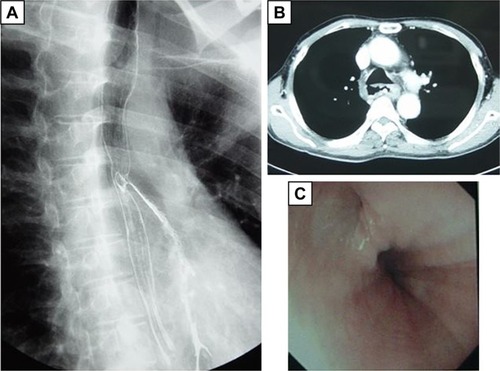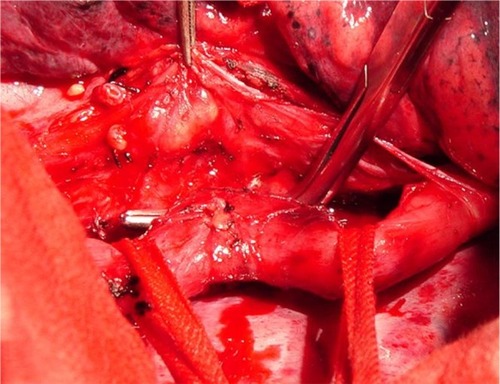Figures & data
Figure 1 A 51-year-old female with esophagotracheal fistula for 7 months underwent division of the fistulous tract and closure of the trachea and esophagus.

Table 1 Demographic and baseline information of patients (N=14)
Figure 2 Preoperative diagnostic investigation.
Abbreviation: CT, computed tomography.

Table 2 Surgical treatments and outcomes of patients with acquired benign esophagorespiratory fistulae in the literature

